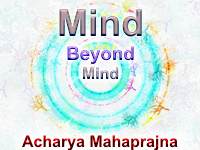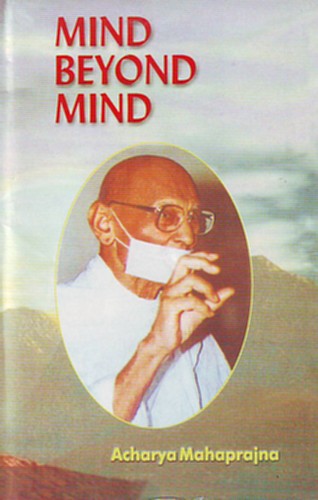
What is the nature of the seer?
The seer is one who sees. He sees in a state of pure consciousness, which is free from all kinds of emotions, attachments, and aversions. There are no feelings and no reactions in this state. It is called the Sakshi Bhava or a state of pure Upayoga or pure activity of the soul.
Does it mean the same thing to say that we should concentrate the mind or concentrate consciousness?
There are three grades of consciousness. The lowest is the mind, the next is Citta, and the highest is pure consciousness, which is the most comprehensive. Citta or Buddhi is a constant element. The mind is born and is perishable. Concentration of consciousness means not to allow the flow of it to go towards passions. Concentration of Citta means merging the power of decisions into the self. Concentration of the mind means the cessation of the fickleness of the mind.
Are Mantra, Yantra and Tantra the same thing or different things?
Man has always been endeavouring to know the nature of sound, the bodily organs, objects, and his own will. He has succeeded in unravelling their mysteries from time to time. There are three causes of these mysteries:
- We come across only a very few modifications of objects.
- Objects are continuously changing. Modifications previously unseen happen at different times and places. We are generally unaware of the powers of modifications.
- Objects undergo changes when they come in contact with other objects and we are generally ignorant of the laws of this contact and the relationships they produce.
A Sanskrit poet has said that there is no letter which is not a Mantra, there is no root which is not a medicine and there is no man who does not possess a potential, but is very difficult to find one who knows the secrets of their combinations which produce power. Some competent persons have, however, known these secrets through sadhana and the knowledge they have provided us have benefited us immensely.
Mantra is a divine force. It is meaningful and inclines us towards the divine essence. The practice of a Mantra means the imbibing in us of the divine power. The structure of our bodies is also a very important thing in sadhana. Geometrical figures (Yantra) possess power by virtue of the settings of their lines. Tantra is instrumental in the expansion of consciousness through its manipulated contact with things. There is a saying to the effect that the powers of diamonds, Mantras, and medicines are indescribable. Thus Mantra, Yantra and Tantra are the instruments which reveal secrets and mysteries. They are real not imaginary entities.
How are we to preserve that which we have achieved or gained in a camp of Yoga training?
These training camps last for a few days only. Then there are very few people who would like to live in permanent institutions of Yoga training for a number of sessions. I think our purpose in joining a training camp is not recreation. The real purpose is to gain some experience and to pursue it further after the camp is over. It is to apply the experience we have gained to our lives and activities. We also have discussion in the camps. These discussions are highly instructive. They extend our knowledge and strengthen our faith. They are necessary for sadhana. Knowledge is indispensable in sadhana. Experts in sadhana lay a great stress on lifting our intellectual level to a higher plane. The next essential is the development of the self, of self-knowledge. That is why a long course is given to the practitioner. This course or courses have to be coordinated with the general advancement of the sciences. We cannot otherwise raise our standards. The next essential is in what proportion we are to mix knowledge and practice so that there may not be any confusion. Great men are exceptions and every body cannot achieve greatness. But the more we know, the greater will be our success. The next thing is sadhana itself. Training in physical postures (Asana), Prandyama (breath control), Kayotsarga (immobilization of the body) and Dharana (concentration of the mind) are basic constituents of sadhana.
We need intellectual as well as spiritual progress. This can he achieved through earnestness and effort. Social and communal life is also very necessary for the fruitfulness of sadhana. We should learn how to live and behave with others. We should learn to live an upright life. Simplicity and the avoidance of friction with others are equally necessary, otherwise sadhana will remain ineffective.
People often talk of miracles in connection with sadhana. The greatest miracle of sadhana is that it brings about a spiritual change in our tendencies and attitudes of life. The purpose of Sadhana is to change ourselves. Sadhana brings about a change in our nature and wipes out the feelings of enmity, transforms our inclinations and tendencies. Is this not a miracle? The purpose of sadhana is the building off character and the uprightness of mind. We should be courteous, polite, and full of friendliness and goodwill towards others. We should not harbour any grudge against anybody. The next thing is work and service. The practitioner should try to live a self-sufficient life and be industrious. That is the basis of what may be called the Jain character.
What is the real and ultimate solution of our problems?
The world is full of diversity and no body can afford to be isolated. Most of our problems are produced by diversity. Our solutions should be devised by keeping this thing in mind. The greatest solution of our problems lies in being self-orientated. Man's spiritual essence is the basis of his life. Spiritual orientation is the crying need of the hour.
End Of Book ----------------------------------------
 Acharya Mahaprajna
Acharya Mahaprajna

